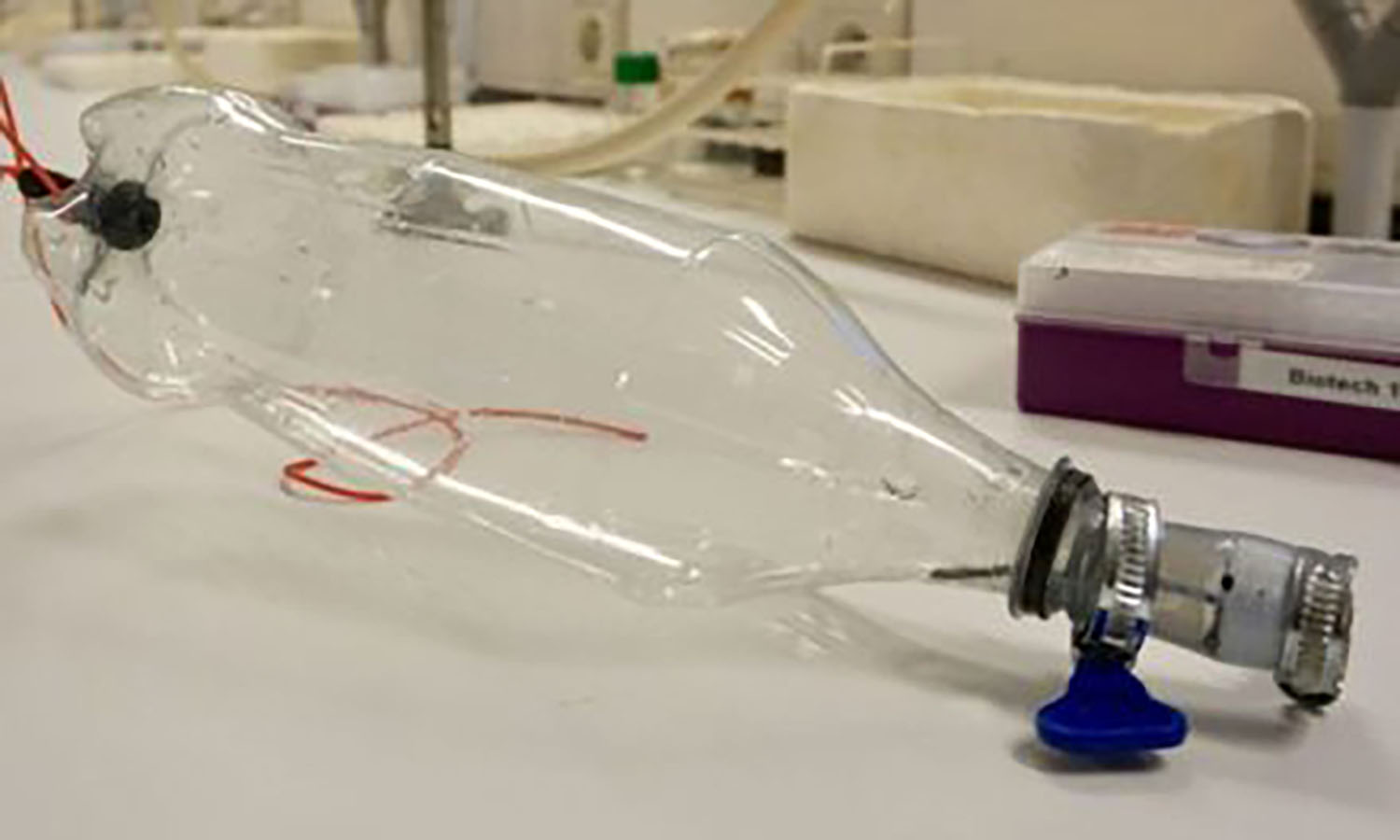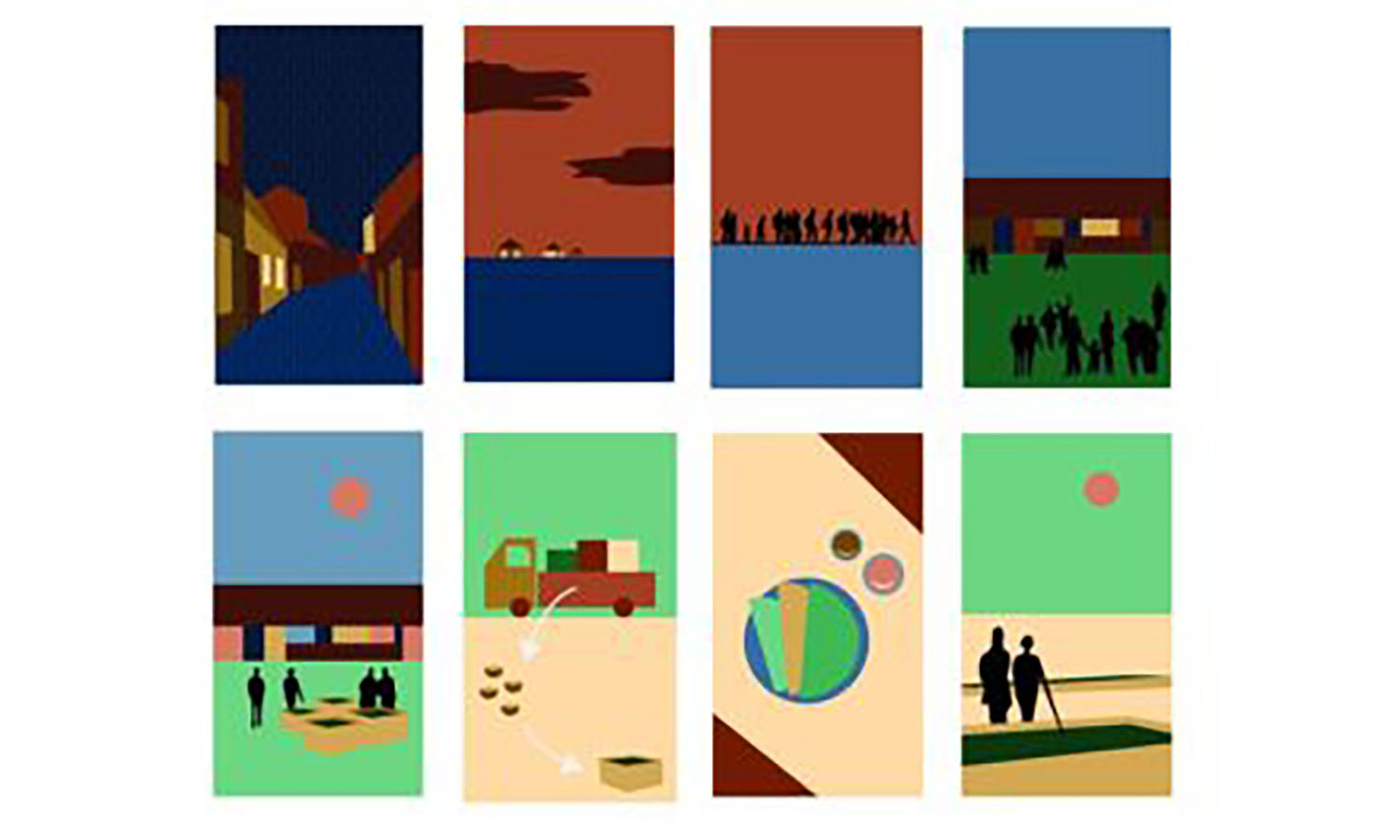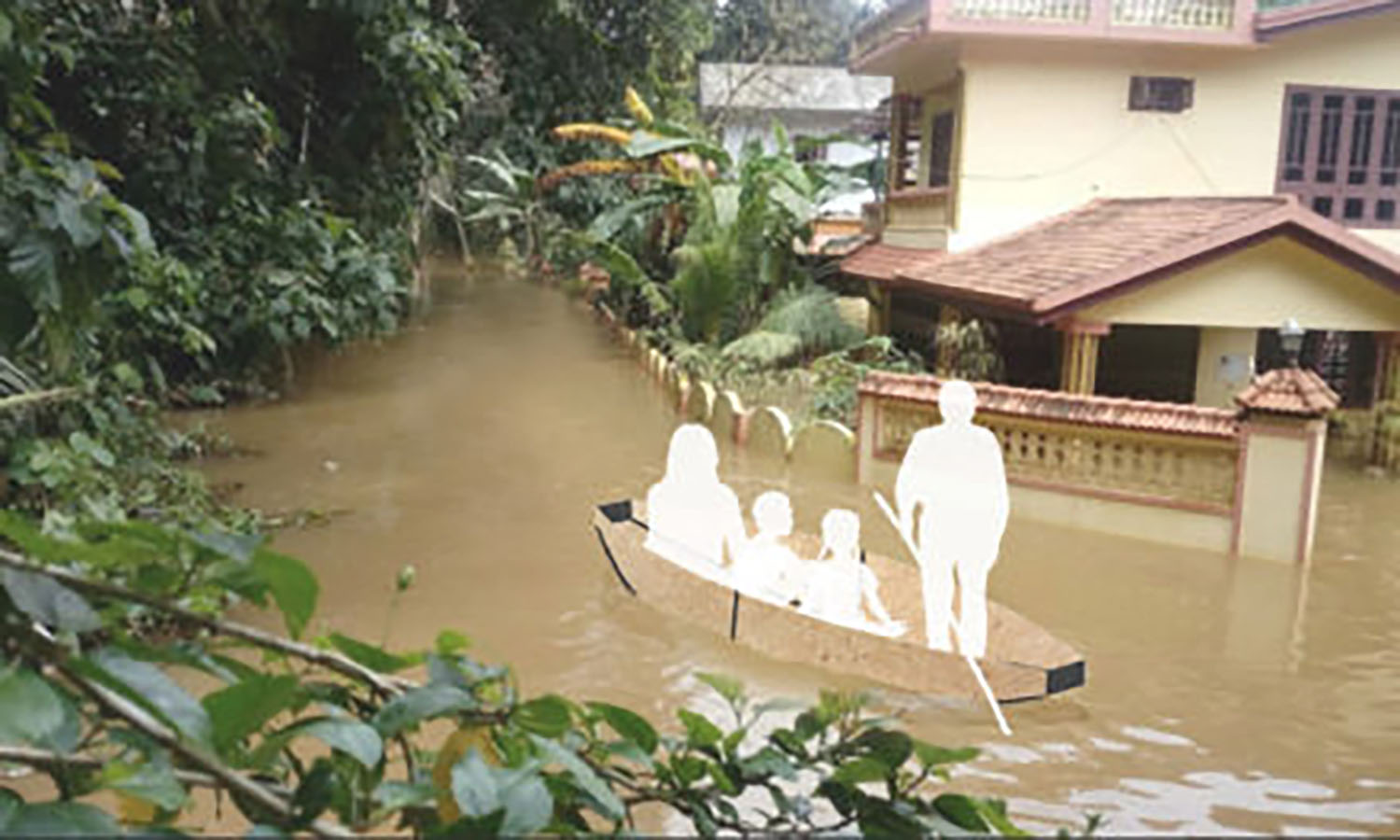Final project : Electric Generator Kit
Open-source lowtech electric generator kit with a mechanical system (if no bike, achievable in mdf panel) and with an electric circuit to manufacture by yourself.
Project Summary
Floods in Kerala mean
- recurring disasters of great magnitude,
- exceeded emergency services and
- power station shutdown. The objective is to take advantage of the high density of mobile phones (MP) and bicycles to facilitate the identification of the most serious injured and thus allow the emergency services to focus on them first. To do this, people need to have a working MP. To ensure sufficient MP load, our project is to produce a cheap, lowtech, manual and portable electric generator, a kind of electrical backup kit, but also a daily use. Distributing will now be done via the fablab network and with the support of organizations such as Causes.
So for 1€ investment (the electric system that allows you to charge your phone at any time) you can save people’s lives.
Story Board
The idea is to make this kit before any problems occur and the person in need will go to the nearest fablab to make his kit (or a distribution will be done by an organism). Then when a disaster occurs,he could use his bike to help him carry his personal belongings. So imagine in a isolated village devastated by flooding. Two days after the disaster, you find your wife alive but suffering martyrdom because a tree trunk charried by a stream crushed his leg and left him with an open fracture of the tibia. The power grid is out of service, your MP batteries are empty and the nearest city is 80 km away. Having the ability to charge your mobile phone and call 911 to explain the severity of your situation can save your wife’s life.
More detail
This summer, it is estimated that 1/6 of the population of Kerala, or nearly 6 million people, were affected by the floods in Kerala, with more than 1 million people relocated to camps.
Flooding is not just a rise of water, it is also violent torrents and landslides that cause many deaths (more than 400 this summer) and injuries (fractures, open wounds that can quickly become infected in the sanitary conditions in which Kerala is found during and after these floods).
The richest, concentrated in the cities, will find the necessary assistance more easily. The poorest, often in isolated rural areas, are at the mercy of external relief.
Faced with the magnitude of the task, first responders do not know where to give head and evacuations are not based on the severity of the injuries but on geographical areas. If you have a MP, you will significantly increase your chances of being rescued more quickly if the injuries require urgent intervention.
But for the poorest, cycling remains the main means of locomotion, a valuable asset for travelling, but also for working. In addition, the density of MP in Kerala is among the highest in India, with an average MP for 8 out of 10 families.
However, power stations must not fail. This summer, many power stations were shut down due to water damage, with a major power station being shut down as early as August 15, while the monsoon continued to float for another week. At the beginning of September, many power stations were not yet operational. Energy production is therefore a serious problem not only during the critical phase of floods but also long after. Once again it will be the poorest who will be more heavily impacted.
It is in order to help these people whose main wealth is their bike and their MP that we wanted to develop an electricity generator that can be adapted to a dynamo and accessible to as many people as possible.
There are commercially available models of such generators but their cost is totally exorbitant (USD 159/piece). The model we propose should cost around EUR 1/piece. And this estimate is not counting on the contribution of the organization Causes (https://www.causes.com/) which has 186 million registered users in 156 countries. It has the particularity of being both a social crowdfunding platform and a social network. Membership in this organisation and the organisation of a campaign are also free of charge (the organisation is financed by advertisements).
In addition, the networking of this organisation would probably make it possible to set up a useful relay between the fablabs of Kerala where the assembly of the components of the generator could be carried out and the populations in need.
The project would be disseminated in two phases:
-Phase 1: that would be done before the next disaster so as soon as possible and could find an interest from the population in need regardless of crisis situations. With minimal investment, they could have a limited but free source of energy.
-Phase 2: that would be done during the transitional period in the camps and that would put in place with the help of the fablabs of Kerala, a contingency plan that would apply mobile minis fablabs to facilitate the construction of this electrical generator kit.
To build this electricity generator, you need one bicycle (the mechanical system), equipped with a dynamo and electrical system that is detailed with its components and their prices in India in the photo below.
References
https://www.resilience-urbaine.com/survie-urbaine/electricite-gratuite-survie-domicile/
https://unsighted.co/enjeux/low-tech-les-vraies-technologies-du-futur/
https://www.lowtechmagazine.com/lavenir-n%C3%A9glig%C3%A9-de-la-bicyclette-stationnaire.html
https://unsighted.co/enjeux/low-tech-les-vraies-technologies-du-futur/
https://www.commotionwireless.net/docs/cck/
https://fr.wikipedia.org/wiki/Groupe_%C3%A9lectrog%C3%A8ne
http://lifebyessent.be/fr/faire-du-sport-pour-generer-de-lelectricite/
http://reso-nance.org/wiki/projets/velo_energie/accueil
https://www.lowtechmagazine.com/lavenir-n%C3%A9glig%C3%A9-de-la-bicyclette-stationnaire.html
http://lowtechlab.org/wiki/R%C3%A9cup%C3%A9ration_de_batteries
http://www.rfi.fr/asie-pacifique/20160606-inde-recyclage-dechet-electronique-sante-croissance
https://www.sustainable-recycling.org/recycling-initiatives/india/?lang=fr
http://www.greenbusinesscentre.com/site/ciigbc/enivromgmt.jsp?servid=184752
https://sofiesgroup.com/news/gestion-des-dechets-electroniques-en-inde-2/
Process : Electric Generator Kit
Open-source lowtech electric generator kit with a mechanical system (if no bike, achievable in mdf panel) and with an electric circuit to manufacture by yourself.
Initial Intention: generate electricity
During natural disasters such as the floods in Kerala, we were told that access to electricity is very difficult or impossible, especially in rural areas.
This difficulty in accessing electricity is unfortunately coupled with a need for electricity that is present because electricity in these cases can allow for light or even allow electronic devices to communicate (telephones, computers, etc.) to function, knowing that communication is a real problem during such a disaster.
We therefore want to produce a product that is designed to generate electricity and is adapted to the conditions of the situation of Kerala.
The electricity generator will be developed to be used directly by people who need electricity at a given moment T.
First Idea: Gravity Lamp
Our first idea was to create a gravity lamp equipped with a USB port to address power inadequacies during disasters. The lamps would be distributed to the victims during the emergency period, namely, during the disaster and during the transitional period at the camp.
A limited stock of lamp will have been produced in prevention which can be distributed directly during the disaster. And during the transitional period in camp, a mobile fablab will be installed in the camp to be able to produce even more lamp with the affected people according to the real need (in order to teach them to be autonomous and to be able to reproduce the lamp themselves).
We had analyzed and understood the operation of the gravity lamp, but after re-examining the situation, we noticed that it was not a primary need, it was a significant but not the most important need in the electricity sector. So we resumed a phase of reflection on the project by re-analysing the situation of Kerala and asking ourselves what was more important.
Second Idea: Mobile Phone Charger
Our second idea was to create an electric generator being powerful enough to charge a mobile phone.
The basic intention is to provide a tool for access to a certain autonomy of electricity for people living in rural areas (more or less remote).
In order for our solution to be widely available, we would like to be in collaboration with the fablab network in Kerala so that it, according to its existing possibilities and constraints, can put in place a manufacturing and dissemination solution that we have developed upstream.
Electric Generator: Analysis
Once we knew what we wanted to do, we had to resolve the question of the system for creating electricity that would be most relevant and interesting in the Kerala situation. So we tried several leads.
The first was to analyse the low tech systems that generate electricity but after analysis we decided to put this idea aside because it was not adequate for the situation.
The second was to work with a gravitational rotation system but after we realized a prototype and analyzed its operation we demonstrated its ineffectiveness.
The third was to work with a magnetic rotation system but it was the same scenario as before. And after we realized a prototype and analyzed its operation, we showed its ineffectiveness.
Perpetual motion does not exist and does not generate electricity: demonstration
First, here is a quick reminder of some well-known laws:
- Newton’s first law: “Every body perseveres in the state of rest or uniform movement in the straight line in which it is located, unless some force acts upon it, and forces it to change state.”
In other words, if there is no force exerting on a body (isolated body), or if the sum of the forces (or resulting force) exerting on it is equal to the zero vector (pseudo-isolated body), the direction and standard of its velocity is constant or, which is the same, its acceleration is zero.
- Newton’s second law: “Changes in movement are proportional to motor force; and are made in the straight line in which this force was printed.” In other words, a mass body m (constant): the acceleration experienced by this body in a Galilean repository is proportional to the result of the forces it undergoes, and inversely proportional to its mass m.
So in order to get perpetual motion, you’d have to remove the friction from the air by making an air vacuum.
Principle of the electric generator:
Just vary a magnetic field in front of a coil to get power. If you move a magnet in front of a coil, you generate electricity.
Electricity is energy, but in the bike wheel system, the wheel contains only a limited amount of kinetic energy. The electrical energy that we produce is actually stolen from the wheel, we are slowing it down to produce power.
Just like in the magnetic system, every time a magnet passes in front of the coil, a force, called Laplace force, opposes the movement of the wheel by sucking some of its energy. This energy is transformed into electricity. Fanilly the wheel stops when all the kinetic energy is transformed into electrical energy.
Lavoisier said, “Nothing is lost, nothing is created, everything is transformed.”
And energy conservation is validated by the first principle of thermodynamics, which indicates that energy is still conserving.
So two repel magnets create a force but a force is not an energy. We have to use energy to bring them closer, energy that we can recover when we go away. As with gravity, you can’t use a force to create energy because it’s still conserving.
Third Idea: Amphibian Bike
In continuation, having spoken in class and having made talks with people who work in the creation of object in a precise case, we wanted to imagine to find a system allowing to seal the ventilators which we can get back in old computers for example, to generate some electricity with the current of the water and creating an amphibian bicycle with this sealed ventilator. The project is interesting and easily practicable, we can seal the ventilator rather easily by using a thin plastic which we melt above with a hairdryer for example. And we can create an amphibian bike from wastes quite easily also, taking in the case of Kerala, bamboo for the floating structure and empty water bottles that we assemble for the floats, with palms that we attach to the radius of the bike, made from thin wooden boards. But after better analysing the project in context, we noticed a problem in the scenario of a disaster such as the flooding of Kerala, knowing that in this kind of situation every second counts, the installation of his amphibian bike is therefore utopian because it would take too much time.
Last & Final Idea: Our Electric Generator
To resolve the time factor and therefore arrive with a project that works in the emergency, we thought to create a crank that functions through a rotational system.
We have imagined three possibles rotation systems:
1) The Manual Crank:
The idea is to create a transportable & simple production kit, only requesting a wood panel and wood glue.
2) The Foot Crank:
After performing the manual crank, we noticed that the movements of the hand give quite quickly pains and therefore we can not achieve this movement for very long. So to solve this problem we’ve been thinking about using our feet, knowing that the movement requires to use its legs, so we can make this move longer by getting even less tired.
3) Existing Bicycle :
After re-analyzing the Kerala situation for the tenth time and asking people on site, we noticed that the bikes were heavily used there so the third rotation system would simply be the bike with an existing dynamo, where we would connect our electrical system to load our phone.
Conclusion
To be able to charge our mobile phone, the electricity generator with a USB output will be developed so that it can be used directly by people who need electricity at a given moment T; either during the evacuation period thanks to the manual crank kit, or during the camp period thanks to the bike or foot crank that are more efficient and less tiring.
Except where otherwise noted, this work by ULB / DFS-Q1 / 2018-2019 is licensed under a
Creative Commons Attribution-NonCommercial-ShareAlike 4.0 International License.



















